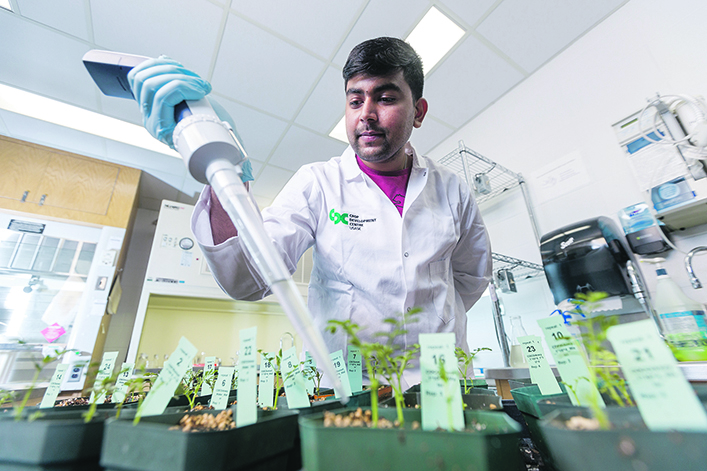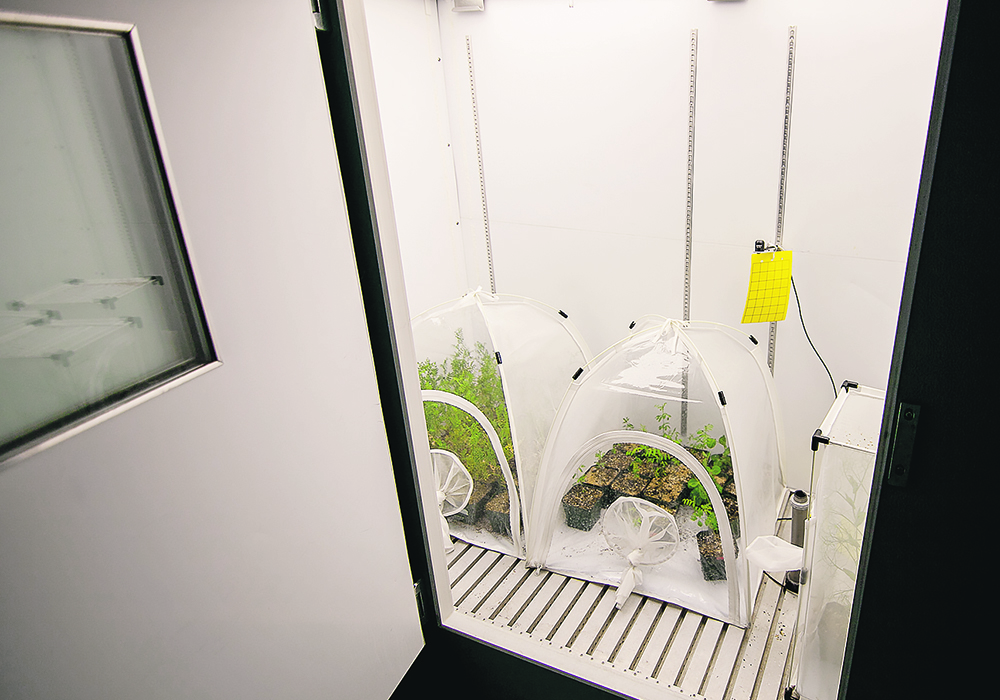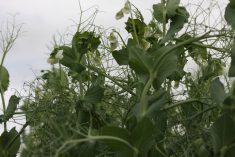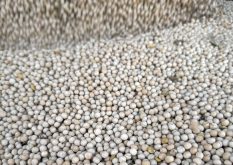Ana Vargas and her U of S team are working to develop disease resistance, tall red lentils and drought-resistant fababeans
CALGARY – A scientist who seeks to breed lentils and fababeans that are a better fit for the Canadian Prairies in an era of climate change sees a bright future for the region’s pulse farmers.
The ability of such crops to fix their own nitrogen means they require less fertilizer and provide high levels of plant-based protein, making them a good fit with consumers who want their food to be more sustainable, said Ana Vargas of the University of Saskatchewan.
“It is a whole global trend of people being more conscious about their choices.”
As the new Agri-Food Innovation Fund chair, Vargas will lead the lentil and fababean breeding program at the Crop Development Centre at the university.
“I think I am in very lucky times because this is probably the best time for promoting pulses and for growing those crops in the world,” she said.
Pulses are increasingly getting the recognition they deserve, said Vargas. Although people have consumed such crops for millennia, a huge North American market is emerging for value-added food products based on plant protein extracted from pulses and for other untraditional uses, she added.
“In things we didn’t imagine before, like fabas, we can grow faba plants as an ornamental crop (for their flowers). We can eat fresh shoots of faba. I was actually seeing some of those in Seattle a few months ago, and I was truly impressed how much money people are willing to pay for those.”
Lentils have risen in the last 30 years from being a rotational crop in Canada to become one of the main crops for farmers, said Vargas. However, red lentils can be as short as 20- to 25-centimetres, leaving producers with only about eight cm for moisture retention after combining.
Vargas believes part of the solution is to modify the plants’ root architecture, potentially allowing them to be at least as tall as green lentils that typically stand at about 40 cm.
“Eighty percent of the roots are on the top layer (of the soil,) so they do have a very shallow root system. If we have the ability to come up with a root that goes deeper, we will have the ability to put a bigger, taller plant on top.”
Root architecture is also a possible solution to growing fababeans as a dryland crop, said Vargas. Now, they are grown under irrigation because of their high water needs.
“I will hope that we can do a lot of genetic improvement to conquer that. The root system of fababeans is really deep, so I will hope that we can definitely modify their root architecture to the point that we can grow them in drier areas.”
Part of the solution will involve boosting pod height for combining, said Vargas. Such considerations are vital because the Prairies are expected to experience more weather extremes, such as hotter and drier conditions, due to climate change.
U of S scientists must study the tolerance of lentils and fababeans to drought and disease stress as a key component of the breeding program “because those changes are going to be more obvious an impact in the next few years, and we are seeing that already, right? It definitely has to be, I will say, a main component of breeding moving forward … and I planned for that to be one of the main pillars of my research just because I do understand that otherwise (these crops) are not going to have the stability we need them to have.”
Root rot is a particularly complex challenge because it is caused by a range of pathogens that include pythium, aphanomyces, fusarium and rhizoctonia, said Vargas.
“But there is already work on resistance to aphanomyces and we are already getting results for fusarium, and that all needs to be included in the breeding program.
“That’s still in the very preliminary stages of pre-breeding, but we’re definitely going to be working a lot on that. It is probably the main concern for the industry right now.”
Another priority for Vargas is improving yields and profitability for western Canadian pulse farmers, which could benefit an agriculture industry facing societal pressures to be more sustainable. The federal government in 2020 set a voluntary national target of a 30 percent reduction in greenhouse gas emissions from fertilizer by 2030.
Although the Achilles heel of fababeans is their high need for water, they likely have the strongest ability to naturally fix nitrogen of any crop grown in Western Canada, said Vargas. They can fix up to 200 kilograms of nitrogen per hectare compared to a maximum of about 40 kg for lentils and peas.
“It is sustainable, it is more profitable, and that’s also beneficial for the whole system. When you have a crop fixing that much nitrogen, then your cereal (crops) will definitely benefit from it because you will need nitrogen to cycle in crops, so yeah, definitely a lot of potential.”

Apart from improving herbicide tolerance in lentils and fababeans, Vargas wants to expand their potential uses to move away from simply supplying the bulk market.
“Fabas are definitely the best source for protein extraction, I would say, because they do have the highest protein content of all the pulses that we know or that we are growing in Western Canada.”
However, the diversity in flower colours has led to research exploring their use as ornamental crops, said Vargas. As well, consumers in the United States are beginning to eat shoots of fababeans as a fresh vegetable.
“Again, those are in smaller markets, but it’s definitely a good example of the potential and the different markets that fabas will reach.”
Other research includes figuring out ways to use pulses to produce red pasta that retains its naturally derived colour through the cooking or boiling process. Consumers who want simple, natural ingredients don’t want to eat chemicals that artificially simulate colour, Vargas said.
“One of the things that we are trying to do is dissecting the genetics of what is really going to keep the red colour in final products, either pastas, crackers or any other products that they are producing.”
As part of her research, Vargas will seek to collaborate with scientists in Australia, Italy and southern Asia. Unifying scientific resources will enable researchers to more quickly achieve results.
















